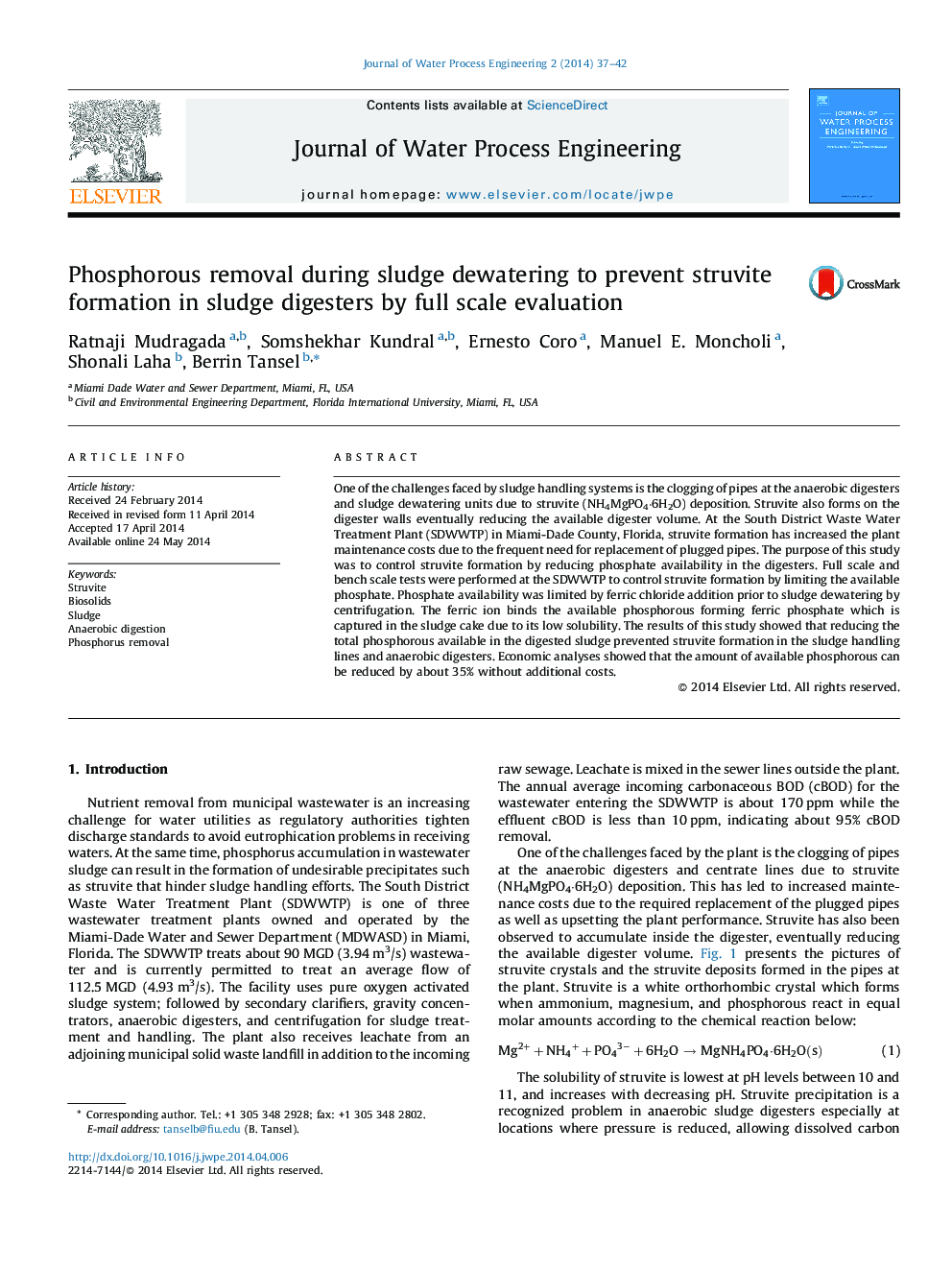| Article ID | Journal | Published Year | Pages | File Type |
|---|---|---|---|---|
| 232566 | Journal of Water Process Engineering | 2014 | 6 Pages |
•Full scale and bench scale tests were performed to control struvite formation.•Phosphate availability was limited by ferric chloride addition.•Phosphate levels were controlled prior to sludge dewatering by centrifugation.•Phosphorous levels can be reduced by 35% without additional costs.
One of the challenges faced by sludge handling systems is the clogging of pipes at the anaerobic digesters and sludge dewatering units due to struvite (NH4MgPO4·6H2O) deposition. Struvite also forms on the digester walls eventually reducing the available digester volume. At the South District Waste Water Treatment Plant (SDWWTP) in Miami-Dade County, Florida, struvite formation has increased the plant maintenance costs due to the frequent need for replacement of plugged pipes. The purpose of this study was to control struvite formation by reducing phosphate availability in the digesters. Full scale and bench scale tests were performed at the SDWWTP to control struvite formation by limiting the available phosphate. Phosphate availability was limited by ferric chloride addition prior to sludge dewatering by centrifugation. The ferric ion binds the available phosphorous forming ferric phosphate which is captured in the sludge cake due to its low solubility. The results of this study showed that reducing the total phosphorous available in the digested sludge prevented struvite formation in the sludge handling lines and anaerobic digesters. Economic analyses showed that the amount of available phosphorous can be reduced by about 35% without additional costs.
Graphical abstractFigure optionsDownload full-size imageDownload as PowerPoint slide
